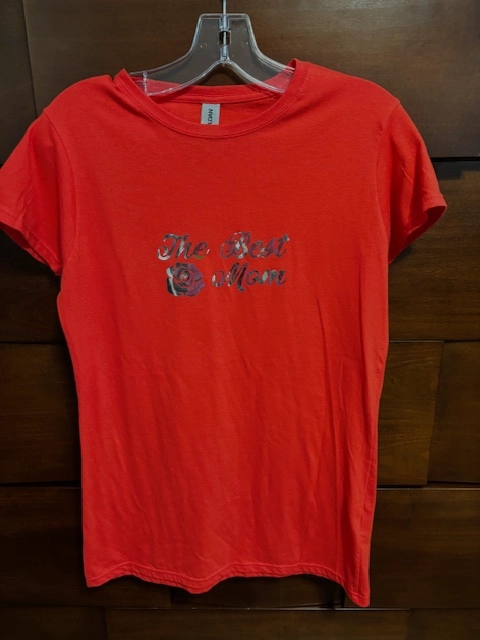Heat Transfer on T-Shirts and Aprons - Custom Layouts and Logos
Heat Transfer on T-Shirts and Aprons - Custom Layouts and Logos
Blog Article
The Art of Custom-made Needlework: Opening the Secrets to Creating One-of-a-kind and Unforgettable Designs
The tricks to developing customized needlework designs that captivate the eye and leave a long-term impact lie in a delicate equilibrium of strategy, creativity, and interest to information. As we delve right into the globe of customized embroidery, we discover the nuanced interaction in between string selection, stitch complexity, and design customization that raises a simple garment to a job of art.
Picking the Right Needlework Threads
When selecting embroidery threads, what essential variables should you take into consideration to make certain the finest results for your custom-made styles? The option of embroidery string is crucial in figuring out the final outcome of your embroidered layout.
Thicker strings can add dimension and texture to your layout, while finer strings are perfect for elaborate details and tiny text. In addition, taking into consideration the color fastness and washability of the thread is important to ensure that your personalized designs maintain their high quality and vibrancy over time.
Discovering Various Stitch Methods
To look into the realm of 'Exploring Various Stitch Strategies', one should grasp the intricacies and nuances that each sewing approach offers the art of embroidery. Various stitch strategies not only add visual passion yet also add to the overall appearance and measurement of the layout. One popular stitch strategy is the satin stitch, which involves closely packed parallel stitches to produce a smooth and glossy surface, suitable for filling up in shapes and producing strong details.
On the various other hand, the backstitch is a flexible method often made use of for laying out and adding fine information. It entails sewing backward to create a strong line of needlework. In addition, the French knot stitch includes a tactile component to layouts, ideal for creating distinctive accents like flower centers or attractive touches.
Checking out different stitch techniques allows embroiderers to play with light, shadow, and deepness within their layouts, boosting the aesthetic allure and creative high quality of their needlework jobs. By understanding numerous stitching approaches, one can unlock countless opportunities for creating unique and memorable personalized needlework items.
Incorporating Personalized Layout Aspects
Having explored the complexities of different stitch methods such as the satin stitch, backstitch, and French knot, the focus now shifts in the direction of integrating customized design aspects in custom-made embroidery jobs. Personalized style elements play a vital function in making needlework jobs really unique and remarkable. One way to integrate personalization is by adding initials, names, or significant dates to the design. This not just adds a tailored touch yet also enhances the emotional worth of the needlework item.
Another way to incorporate customized design elements is by including icons or concepts that hold special significance to the recipient or reflect their interests and personality. Including a preferred blossom, animal, or hobby-related icon can make the embroidery design extra significant and personalized. In addition, picking colors that reverberate with the recipient or straighten with the designated motif can further boost the personalization of the needlework job.
Understanding the Art of Color Control

One trick element of shade control is recognizing shade concept. This consists of understanding exactly how different shades engage with each various other, the emotions they share, and exactly how they can be integrated to create visually attractive layouts. By more tips here using color theory principles, embroiderers can create harmonious shade combinations that boost the overall look of the design.
In addition, paying focus to contrast is essential in color coordination. Utilizing contrasting colors can help particular elements of the layout pop, boost clarity, and develop a visually vibrant needlework piece. By understanding the art of color sychronisation, embroiderers can elevate their designs and produce unforgettable pieces that reverberate with customers and visitors alike.
Enhancing Appearance With Advanced Needlework Stitches
French knots, for instance, are perfect for adding small, elevated dots to your design, mimicking the look of grains or creating a textured surface area. Bullion knots, on the other hand, can be used to create twisted, ropelike aspects that include an extravagant feel to the needlework. Seed stitching entails tiny, scattered stitches that can load in areas with a speckled appearance, while turkey job creates fluffy, dimensional accents similar to animal hair or vegetation. Exploring with these innovative needlework stitches enables you to press the borders of traditional needlework and create genuinely distinct and visually enticing structures in your designs.
Conclusion
To conclude, the art of personalized embroidery involves a mix of picking the best threads, exploring different stitch strategies, integrating personalized style elements, understanding shade coordination, and improving appearance with advanced stitches. By recognizing and carrying out these essential aspects, embroiderers can create one-of-a-kind and memorable layouts that showcase their creativity and skill. Embroidery fanatics can unlock the tricks to producing attractive and custom items that stand out and leave a long lasting impact.
Report this page